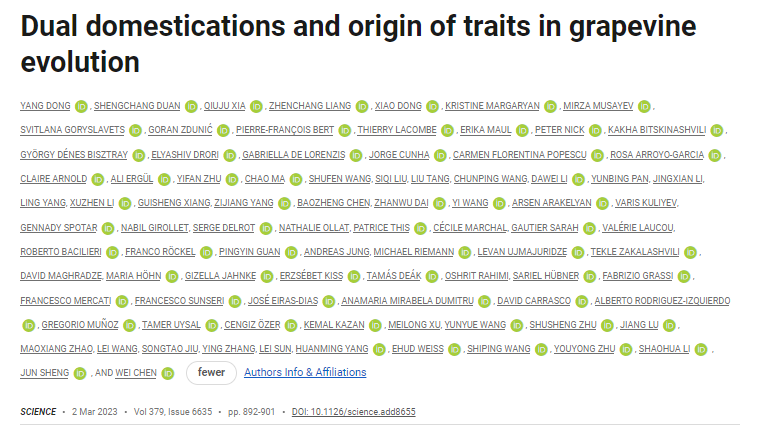Grapevine Evolution in SCIENCE
Either in a wineglass or as a snack, grapes have been culturally significant for thousands of years. However, their evolution has been unclear. In the most recent Science paper, a consortium of over 80 researchers, including GREEN-IT members and INIAV researchers José Eiras-Dias and Jorge Cunha, analyzed genetic data from about 3500 cultivated and wild grape varieties from around the world, in order to comprehend the evolutionary road of grapevine.
Throughout history, Humans have shaped and molded the organisms around them. Grapevine evolution showcases precisely that, as the researchers found that it mirrors key events of World history regarding climate change and human migrations.
It all started in the last Ice Age, with the separation of Vitis sylvestris into two distinct forms. The harsh climate and changing climate cycles felt during this stage of the Pleistocene period led to a gradual geographic isolation process. With the last glacial maximum, the areas with suitable environmental conditions for these two distinct forms became entirely separate. By then there were two V. sylvestris forms – one occupying western Asia and the Caucasus (Eastern ecotype), and the other occupying Central Europe and the Iberian Peninsula (Western ecotype).
The arising of Vitis vinifera occurs in the early Holocene, which brought a wet climate and facilitated the expansion of suitable habitats for the Eastern ecotype. As a result, this form of grape expanded from Central Asia all the way to the Iberian Peninsula. The researchers suggest the occurrence of two main domestication events happening at this time in the Caucasus and Western Asia, concurrent with the onset of agriculture, leading to the establishment of wine grapevines and table grapevines.
These domesticated versions of grapevines then got dispersed along human migration routes. While the Caucasus domesticates had limited dispersal, Western Asia domesticates dispersed with early farmers into Europe. The researchers found evidence that suggests the occurrence of the transfer of genetic material between these domesticated versions and the ancient wild western ecotypes. The resulting hybrids subsequently diversified along human migration trails, originating muscat and unique western wine grape ancestries by the end of the Stone Age. This once more substantiates the role of viticulture in forming agricultural societies.
Original paper
Yang Dong et al., Dual domestications and origin of traits in grapevine evolution. Science 379, 892-901 (2023).DOI:10.1126/science.add8655



